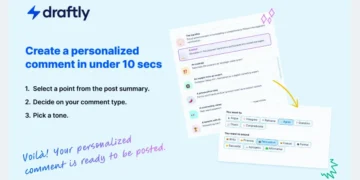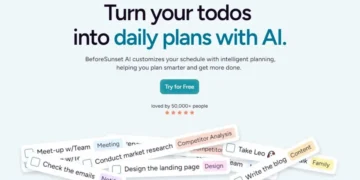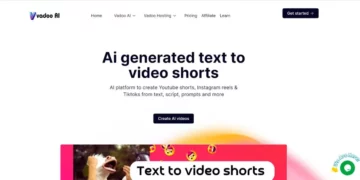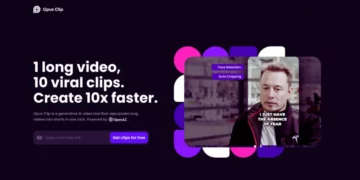OpenAI has just unveiled its latest series of artificial intelligence models, collectively known as o1, aiming to revolutionize how AI handles complex reasoning and problem-solving tasks. This new lineup includes two distinct models: o1-preview and o1-mini, each tailored for specific applications in science, mathematics, and programming. Unlike its predecessors, the o1 series is designed to “think before responding,” closely mimicking human cognitive processes to tackle challenging problems more effectively.
What is OpenAI’s o1 model and why is it important?
The o1 model represents a significant leap forward in AI technology. It differs from earlier models by dedicating more time to evaluate and refine its thought process before generating a response. This approach allows o1 to test various strategies and recognize potential errors, leading to more accurate and reliable solutions. By imitating human-like reasoning, o1 is particularly adept at handling tasks that require deep understanding and complex problem-solving abilities.
In benchmarking tests, o1 has demonstrated performance comparable to doctoral-level students across various scientific disciplines. For instance, in a qualifying exam for the International Mathematical Olympiad (IMO), o1 correctly solved 83% of the problems, a stark contrast to its predecessor, GPT-4o, which achieved only a 13% success rate. These results highlight o1’s enhanced capability to manage intricate tasks effectively.
Key features and capabilities
- Advanced Reasoning: o1 spends more time thinking through problems, leading to more accurate and nuanced responses.
- Error Recognition: The model can identify and correct its mistakes during the problem-solving process.
- Versatility: Suitable for a wide range of applications, including science, programming, and mathematics.
- Cost-Effective Options: The o1-mini model offers a powerful yet economical alternative for specific coding tasks.
Who should use the o1 Model?
The o1 series is particularly beneficial for professionals and researchers who encounter complex problems in fields like science, coding, and mathematics. Here are some examples:
- Healthcare Researchers: Can use o1 to annotate cellular sequencing data, enhancing the accuracy of biomedical research.
- Physicists: May generate complex mathematical formulas necessary for advanced topics like quantum optics.
- Software Developers: Can build and execute intricate workflows involving multiple steps, streamlining the development process.
OpenAI has also introduced o1-mini, a smaller and more affordable model designed for specific coding tasks. Priced at 80% less than o1-preview, o1-mini offers a powerful yet cost-effective solution for applications that require reasoning but not an extensive knowledge base.
Security and alignment
One of the key focuses in developing the o1 series is safety and alignment. OpenAI has implemented a new training approach that leverages the model’s reasoning capabilities to better adhere to safety guidelines and alignment protocols. In rigorous tests designed to bypass security measures (known as “jailbreaking”), o1-preview scored 84 out of 100, while GPT-4o managed only 22 points. This ability to reason about security rules within context enables o1 to apply these guidelines more effectively, enhancing overall safety.
How to access the o1 model
Currently, the o1 models are available to ChatGPT Plus and Team subscribers, with weekly message limits of 30 messages for o1-preview and 50 messages for o1-mini. OpenAI plans to extend access to all free ChatGPT users soon. Additionally, the models are accessible via the OpenAI API, although there are some initial limitations, such as the lack of function calling or message streaming capabilities.
To start using o1 or o1-mini, paid ChatGPT subscribers can simply select one of these new options from the model selector and begin exploring their reasoning capabilities.
Future developments
OpenAI has ambitious plans for the o1 series, including regular updates and enhancements that will introduce features like web browsing, file and image uploads, and other functionalities to increase its utility. The company also intends to continue developing models within both its GPT and o1 series, promising to expand AI capabilities across various fields and applications.
Potential applications of o1
The introduction of o1 opens up a plethora of new possibilities:
- Accelerated App Development: Users have reported creating fully functional iOS applications in just 10 minutes using o1, significantly reducing development time.
- Game Creation: The model can develop 3D games within minutes, showcasing its efficiency and creative potential.
- Data Annotation: Researchers can employ o1 to annotate complex datasets, such as cellular sequences, enabling more precise and rapid analysis.
- Advanced Mathematical Problem Solving: o1’s ability to solve 83% of IMO qualifying problems demonstrates its prowess in handling challenging mathematical tasks.
- Code Optimization and Debugging: Tools like GitHub Copilot have noted significant improvements in code optimization and error correction when leveraging o1.
Creating effective prompts for GPT-o1
Using GPT-o1 effectively may require a shift in how prompts are constructed:
Simplify your prompts
- Be Direct: Instead of crafting long, detailed prompts, use simple language.
- Trust the Model’s Reasoning: Allow o1 to determine the best approach without overloading it with guidance.
Avoid “Chain-of-Thought” prompts
- Let o1 Think Internally: There’s no need to provide step-by-step instructions; o1 can internally process and reason through the problem.
Use delimiters for clarity
- Employ Separators: Utilize delimiters like triple quotes or XML tags to define different sections of your prompt clearly.
Limit context in retrieval tasks
- Avoid Overloading with Data: Providing excessive context can confuse the model. Focus on supplying only the necessary information.
This evolution in prompt engineering reflects a move towards more intuitive AI interactions, where users can focus on the problem at hand without worrying about crafting the perfect prompt.
Notable limitations
While o1 offers groundbreaking capabilities, it’s not without its drawbacks:
- Slower Response Times: o1 takes between 10 and 30 seconds to generate results, which is slower compared to other ChatGPT models.
- No Web Browsing: Currently, o1 cannot navigate the internet.
- Limited Multimedia Processing: The model cannot process images, audio, or video content.
- Not Ideal for Simple Tasks: For straightforward queries or applications requiring quick responses, other models may be more suitable.
Despite these limitations, o1’s advanced reasoning abilities make it a valuable tool for tasks where accuracy and depth of analysis are paramount.
Challenges and limitations
While o1 represents a significant leap forward in AI capabilities, it is not without its drawbacks. One of the primary limitations of o1 is its slower response time compared to other models, such as GPT-4o. While previous models respond in a matter of seconds, o1 takes between 10 and 30 seconds to generate a response, making it less suitable for applications that require fast answers, such as customer service chatbots.
Additionally, o1 is currently unable to browse the web or process multimedia content like images or videos, which could limit its use in some scenarios. However, OpenAI is actively working on addressing these limitations in future updates.
Is o1 right for you?
Ultimately, whether the o1 model is right for you depends on your specific needs. If you require deep reasoning capabilities for complex tasks in fields like science, coding, or mathematics, o1 could become an indispensable tool in your workflow. On the other hand, if speed and simplicity are your top priorities, other models like GPT-4o may still be a better fit.
For developers and researchers tackling difficult problems that require accuracy and thorough reasoning, the o1 model’s slower, more deliberate approach offers significant advantages. As OpenAI continues to refine and expand the model’s capabilities, its potential applications will only grow.
Conclusion
OpenAI’s o1 model marks a significant milestone in the evolution of artificial intelligence. By incorporating human-like reasoning and dedicating more time to thought processes, o1 excels in solving complex problems across various domains. Whether you’re a researcher, developer, or scientist, o1 offers powerful capabilities that can enhance your work and open up new possibilities.
As OpenAI continues to refine and expand the o1 series, we can expect even more advanced features and broader accessibility. While the model has its limitations, the benefits for tasks requiring deep reasoning and complex problem-solving are substantial.
What do you think? Is o1 the future of AI-driven problem solving, or do you prefer sticking with faster, more economical tools?
FAQs
Dijiste:faqs
ChatGPT dFrequently Asked Questions (FAQs) for OpenAI’s new o1 model:
1. What is the o1 model by OpenAI?
The o1 model is a new series of artificial intelligence models developed by OpenAI, designed to improve reasoning and problem-solving capabilities. Unlike previous models, o1 spends more time thinking before responding, making it ideal for tackling complex tasks in fields like science, mathematics, and programming.
2. How is o1 different from other OpenAI models like GPT-4?
The o1 model is specifically designed for complex reasoning and problem-solving. It takes longer to generate a response compared to models like GPT-4 because it evaluates and refines its thought process. While GPT-4 provides quicker responses, o1 is more accurate for tasks that require in-depth analysis and critical thinking.
3. What are the key features of the o1 model?
- Advanced Reasoning: Takes more time to think and evaluate, leading to more precise answers.
- Error Recognition: Can identify and correct mistakes during problem-solving.
- Wide Application: Suitable for fields like science, programming, mathematics, and more.
- Cost-Effective Options: o1-mini is available as a smaller, more affordable model for specific tasks like coding.
4. Who can benefit from using the o1 model?
The o1 model is particularly useful for professionals and researchers dealing with complex challenges in fields like:
- Healthcare research (e.g., data annotation for cellular sequencing)
- Physics (e.g., generating complex formulas for quantum optics)
- Software development (e.g., building and executing multi-step workflows) It’s also ideal for anyone working in fields that require deep reasoning, such as mathematics, coding, and scientific research.
5. How can I access the o1 model?
The o1 models are currently available for ChatGPT Plus and Team subscribers, with a limit of 30 messages per week for o1-preview and 50 messages for o1-mini. OpenAI plans to extend access to free users in the future. The models can also be accessed through the OpenAI API, though some initial limitations apply (e.g., no function calling or message streaming).
6. How much does o1 cost?
o1-preview is included in the ChatGPT Plus subscription, and o1-mini is available as a more affordable alternative. o1-mini is 80% cheaper than o1-preview, making it a cost-effective solution for tasks like coding that require reasoning but not an extensive knowledge base.
7. Can I use o1 for simple tasks?
Although o1 excels at handling complex tasks, it may not be ideal for simple queries or applications where speed is essential. For simpler tasks, other models like GPT-4 may offer quicker and more economical responses.
8. What kind of problems can o1 solve?
The o1 model is designed to solve complex problems in areas such as:
- Mathematics (e.g., solving complex equations, including those in Olympiad-level competitions)
- Science (e.g., generating and analyzing complex scientific formulas)
- Programming (e.g., debugging, optimizing code, and building complex workflows) It’s particularly effective in fields that require deep reasoning and precision.
9. Does o1 have limitations?
Yes, o1 has some limitations:
- Slower response times: It takes between 10 and 30 seconds to generate responses.
- No web browsing: Unlike other models, o1 cannot access the internet to retrieve information.
- No multimedia processing: The model cannot process images, audio, or video.
- Not ideal for quick tasks: It’s slower than models like GPT-4, which may be more suitable for simple or rapid tasks.
10. How is o1 used in real-world applications?
- App Development: o1 can create fully functional applications in just minutes.
- Game Development: It has been used to develop 3D games in as little as one minute.
- Data Annotation: Researchers can use o1 for annotating complex datasets, such as cellular sequences.
- Problem Solving: It has been tested in high-stakes academic scenarios like the International Mathematical Olympiad and has outperformed previous models.
11. What is o1-mini, and how is it different from o1-preview?
o1-mini is a smaller, more affordable model specifically designed for tasks like coding. It’s 80% cheaper than o1-preview, making it an ideal choice for applications that require reasoning but not an extensive knowledge base or deep learning across a wide array of topics.
12. Will o1 be available to free users?
Yes, OpenAI plans to extend access to free ChatGPT users in the future. Currently, it’s only available to paid subscribers (ChatGPT Plus and Team plans).
13. How is the security of the o1 model improved?
OpenAI has focused heavily on improving security and alignment in the o1 model. It’s better at adhering to safety guidelines and has shown remarkable improvement in resisting security breaches like jailbreaking. In tests, it scored 84/100 in adhering to security protocols, compared to 22/100 for GPT-4o.
14. How can I create effective prompts for GPT-o1?
Here are some tips for crafting prompts for GPT-o1:
- Keep it simple: Use direct and concise prompts, as the model can handle more complex reasoning internally.
- Avoid step-by-step instructions: You don’t need to guide the model through each step. Trust its reasoning capabilities.
- Use delimiters: Utilize symbols like triple quotes or XML tags to separate different parts of your prompt.
- Limit the context: Provide only the essential information for retrieval tasks. Too much data can confuse the model.
15. What’s next for the o1 series?
OpenAI plans to release regular updates for the o1 series, which may include features like:
- Web browsing
- File and image uploads
- Improved utility across various domains These updates aim to enhance the functionality and expand the capabilities of o1, making it even more versatile for professional and academic applications.
16. Can o1 be used for coding?
Yes, the o1 model, particularly o1-mini, is highly effective for coding tasks. It can:
- Optimize and debug code: Developers have seen significant improvements when using o1 for code optimization.
- Accelerate app development: Some users have created fully functional apps in under 10 minutes.
- Work with GitHub Copilot: GitHub has reported enhanced performance when integrating o1 with their Copilot tool.
17. Is o1 prone to errors?
While o1’s reasoning capabilities reduce the frequency of errors, it is not entirely immune to hallucinations or incorrect responses. OpenAI has acknowledged that the model still faces challenges in maintaining 100% accuracy, but its error rate has improved compared to previous models like GPT-4.
18. Can o1 handle multiple languages?
Yes, like previous models from OpenAI, o1 can handle multiple languages, although its reasoning capabilities are best demonstrated in languages with rich training data, such as English.
Follow us on our social networks and keep up to date with everything that happens in the Metaverse!
Twitter Linkedin Facebook Telegram Instagram Google News Amazon Store
Recent Posts
- Coinstore hits 10 Million Users Milestone, Join Grand Celebration with $100,000 + Prize Pool
- Domus Crypto Launches LIA, an AI-Driven Assistant for Personalized Portfolio Management
- BitGo Launches Institutional Support for sBTC, Expanding Bitcoin DeFi Accessibility
- BTC price prediction today: It will rise to $138,500 by the end of 2025. SAVVY MINING teaches you how to earn a stable income online every day
- The Future of Work in the Metaverse: Virtual Jobs or Reality?











































